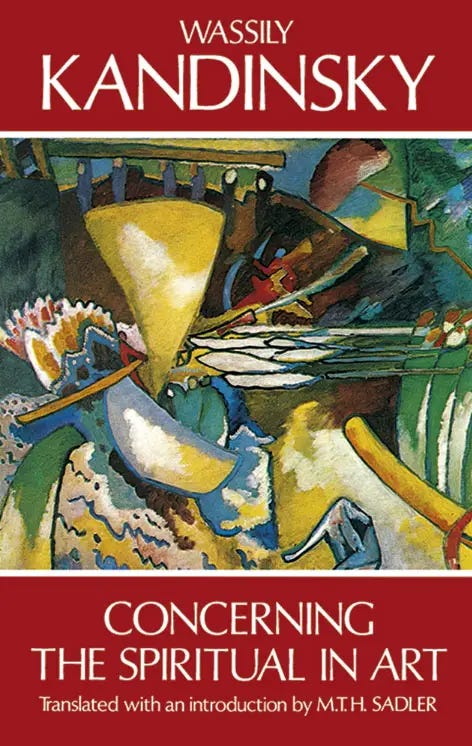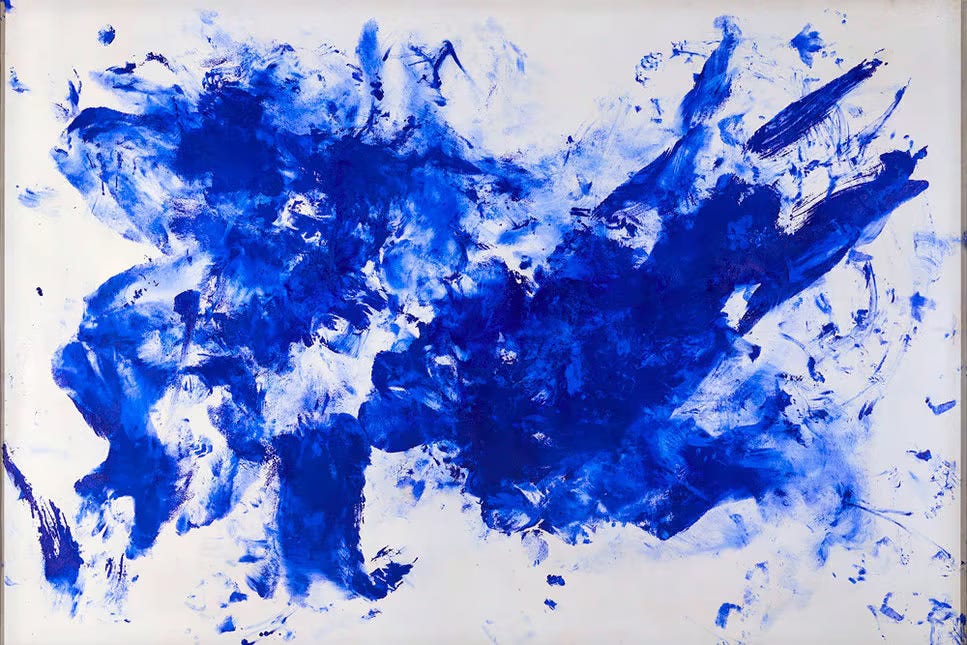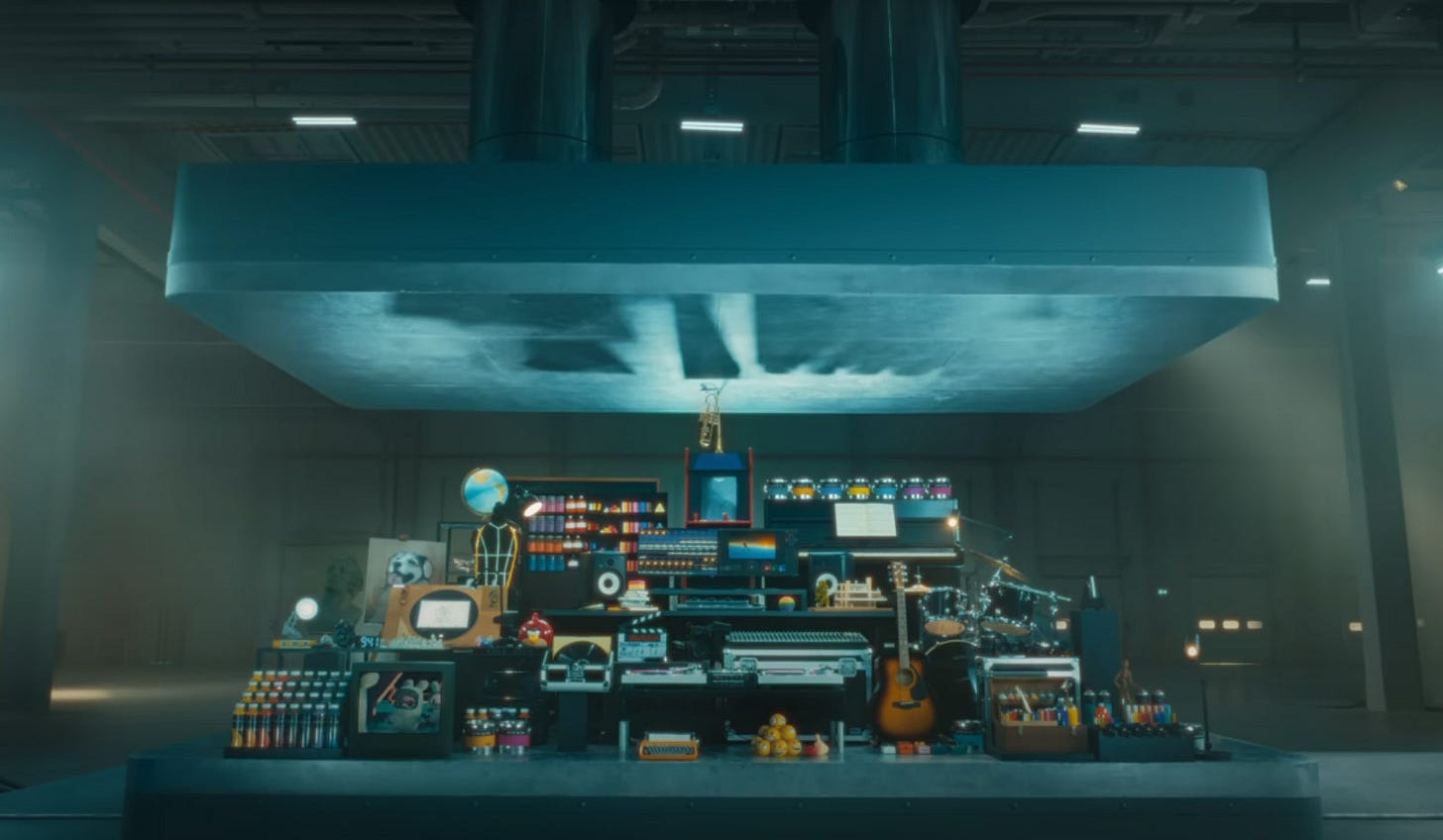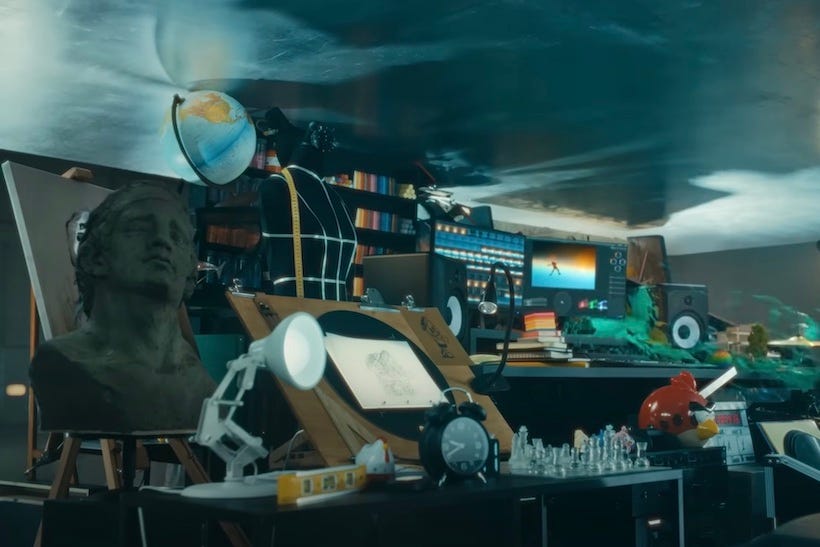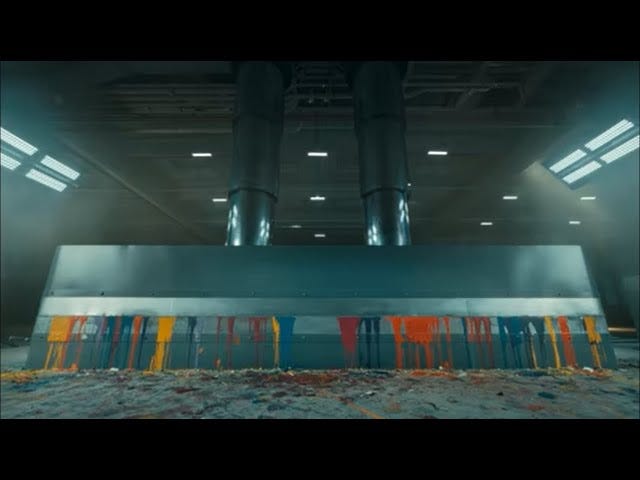Okay, we’re doing things a little bit differently today. [claps hands together in enthusiasm] I’m simultaneously posting my thoughts to Instagram as a series of Stories and to Substack as a long-form essay. Living dangerously, I know.
The questions that emerge from this discussion are the most important part for me, particularly since I’ve been promising to address the topic of frequencies and frequency devices for ages. Well here we are! Now is that time. So since a lot of folks have wandered away from Instagram, myself included, I’m attempting to make it as easy as possible to chime in.
Drop your questions in the comments, or reply to this email.
Jumping In With Both Feet
Frequencies have been on my mind recently after the sudden realization that a portion of the health complications that I’ve weathered these past five years are because I was poisoned in the winter of 2019. Dunn. Dunnn. Dunnnnnn. Mrs. White in the kitchen with… the poison. Wait. Wait. That wasn’t part of the original game.
References to Clue are about all the specifics that I’m going to give because some things need to remain private. The circumstances and people involved touch others in my life. I have no desire to air any of that publicly. Why anyone would do this still remains (mostly) a mystery.
What all of this has prompted is some interesting poking around on the internet and conversations with friends, not necessarily in that order. One of the treatment methods that I kept coming across for the particular poison that I ingested is Prussian blue. Except nothing about that pinged for me related to what I’m experiencing — with one exception. The color.
I should backtrack. From what I can tell, the poison itself has mostly left my system, but the energetic signatures still remain. Also, like pharmaceutical medications, the poison didn’t work “the way it was supposed to” which I believe saved my life. Considering that I’ve bumped up against death more than once in the past few years, that doesn’t sound like a stretch.
When I shared all of this with a friend, after responding, “FASCINATING!” she immediately shot back two episodes of a podcast that she had listened to the day prior, both on the topic of vibration and frequency. I highly recommend surrounding yourself with people who respond with curiosity instead of doubt. As she put it, what uncanny timing that she had just been listening to recordings on this topic. A coincidence indeed. I will never tire of how the interconnectedness of the universe works.
So I set about listening — while pausing every few minutes to do various internet searches — to “It all comes down to Vibration & Everything is Connected,” in which Randy Masters talks about a meditation that restores life vitality using slow breathing and visualization of a cobalt blue light. I have some hesitations about Randy due to his connection to and endorsement by Kryon, one of the sketchiest channeled beings out there, but the information he shares does not feel energetically devious.
Before I could get to the actual mediation, even though it’s only fifteen minutes into the episode, I became completely distracted thinking about Kandinsky and his 1910 book, Concerning the Spiritual in Art. If this sounds familiar it’s because I have mentioned it on numerous occasions. This book, as described on the website dedicated to his art, tells us —
The task of the artist is to find “the principle of the innermost necessity” that he or she can use through expressive means to achieve the goal, “vibration of the human soul.”
Perhaps one of the reasons that this book has always spoken to me (in addition to being tiny but dense) is that like Kandinsky, I have always seen colors emerge from music and music emerge from colors. Orchestra performances were a visual experience as much as they were auditory.
During high school (prior to ever knowing of Kandinsky), I often perceived people through a series of colors and shapes that composed their personalities, even the parts that others did not see. Reading Kandinsky’s description of the connection between all of these things felt familiar and put a language to a way that I moved through the world.
Kandinsky focused a great deal on the interplay and relationships between shape, color, and sound. In the chapter “The Psychological Working of Colour,” he writes —
But to a more sensitive soul the effect of colours is deeper and intensely moving. And so we come to the second main result of looking at colours: their psychic effect. They produce a corresponding spiritual vibration, and it is only as a step towards this spiritual vibration that the elementary physical impression is of importance.
Whether the psychic effect of colour is a direct one, as these last few lines imply, or whether it is the outcome of association, is perhaps open to question. The soul being one with the body, the former may well experience a psychic shock, caused by association acting on the latter.
You can understand how my mind often ends up back here.
As I googled Kandinsky and blue, wondering the deeper connection between the two, I came across the following quote —
The deeper the blue becomes, the more strongly it calls man towards the infinite, awakening in him a desire for the pure and, finally, for the supernatural... The brighter it becomes, the more it loses its sound, until it turns into silent stillness and becomes white.
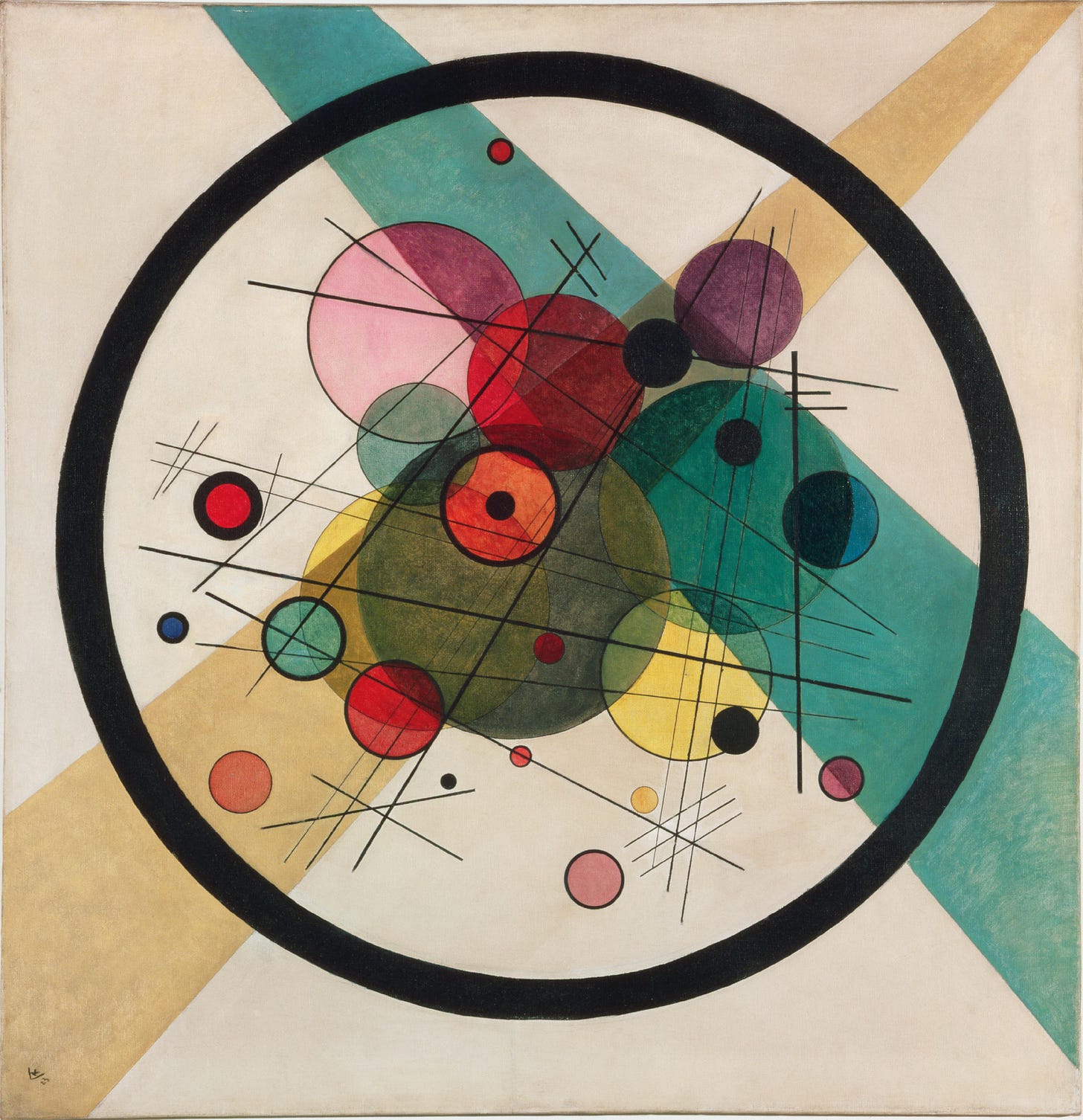
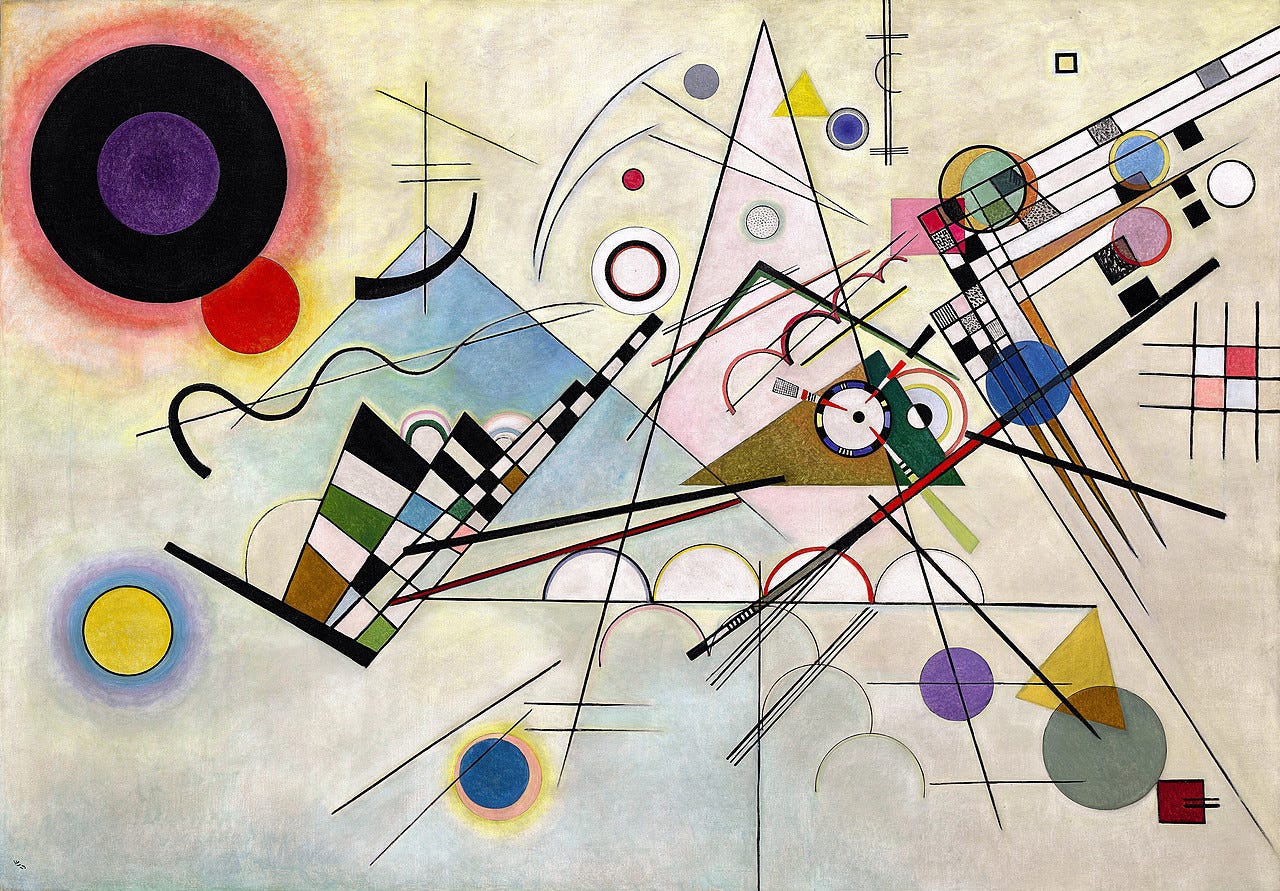
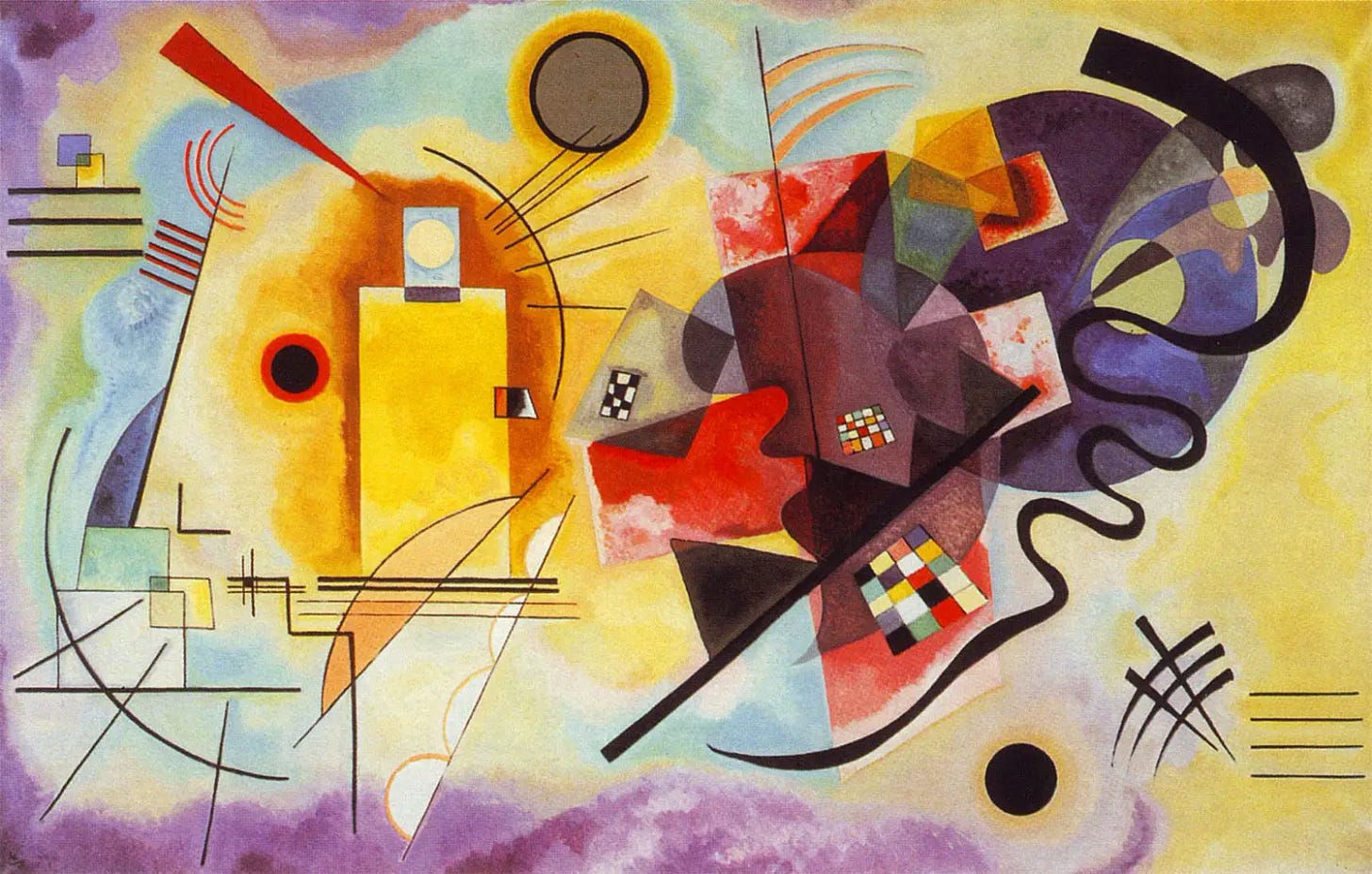
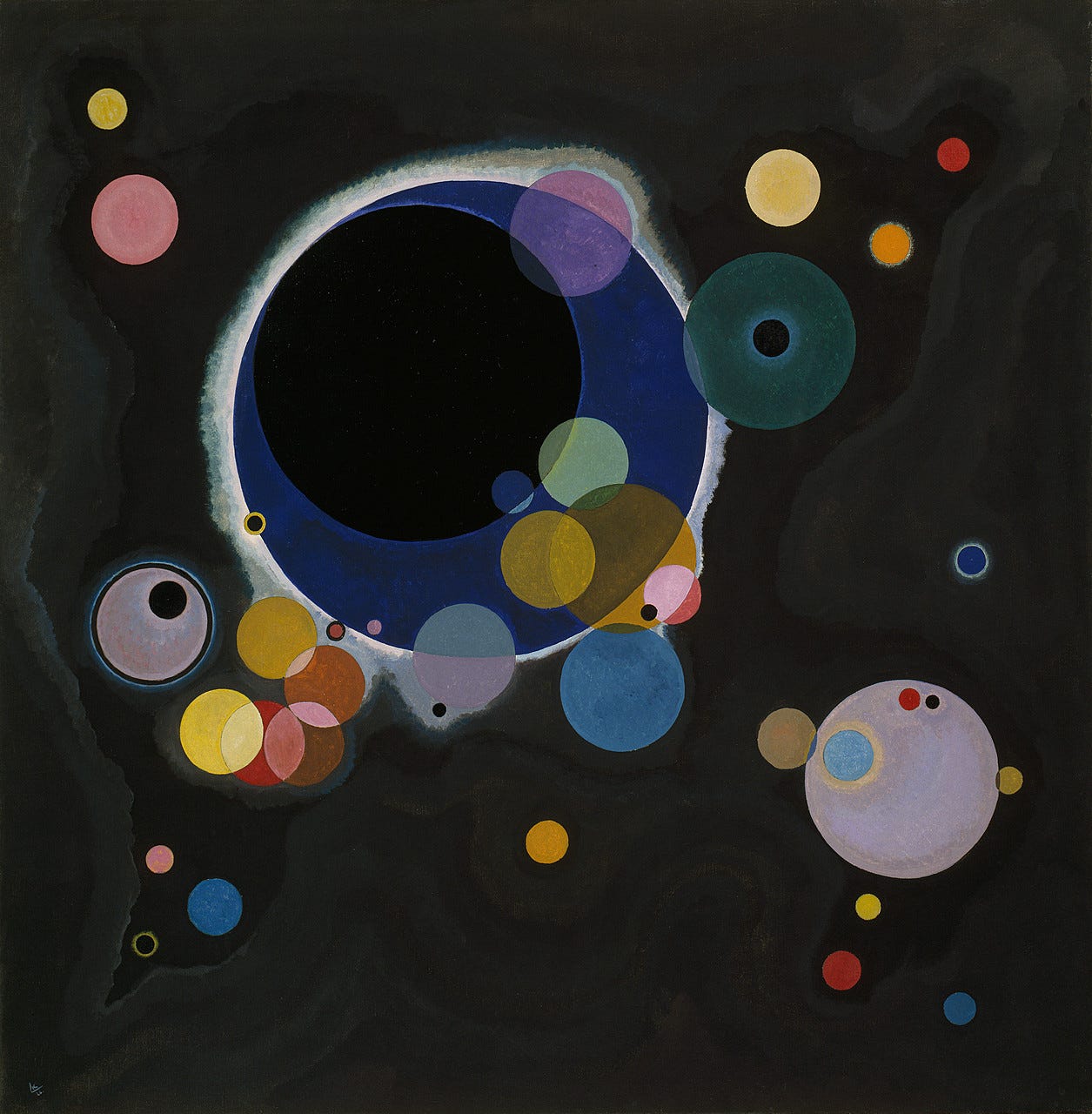
Turns out that when you focus on the color blue for long enough, you inevitably find Yves Klein in your thoughts as well, at least I do. Lo and behold, Kandinsky and Klein had incredibly similar things to say —
"What is blue"?" the nouveau realist, minimalist and performance artist Yves Klein famously asked. "Blue is the invisible becoming visible. Blue has no dimensions, it is beyond the dimensions of which other colours partake," he concluded.
If blue has such transcendent qualities, why shouldn’t it have the ability to heal?
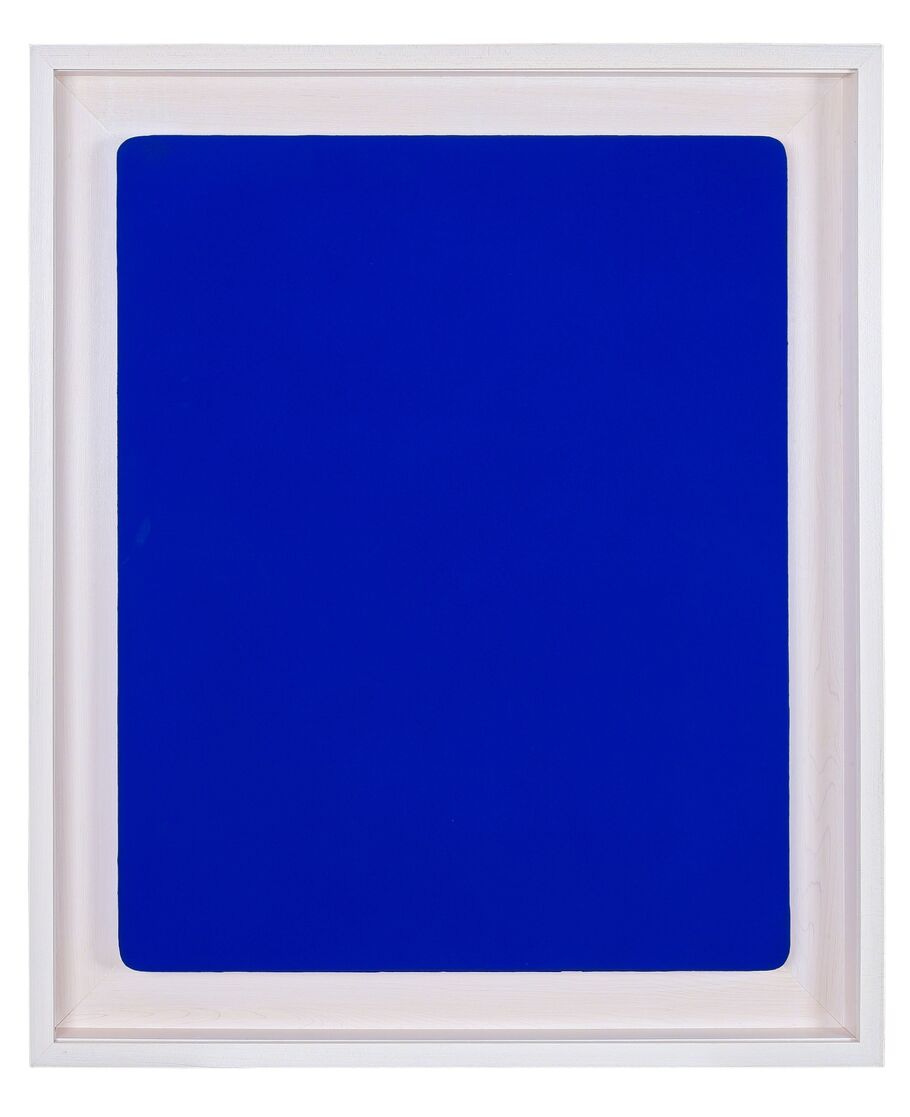

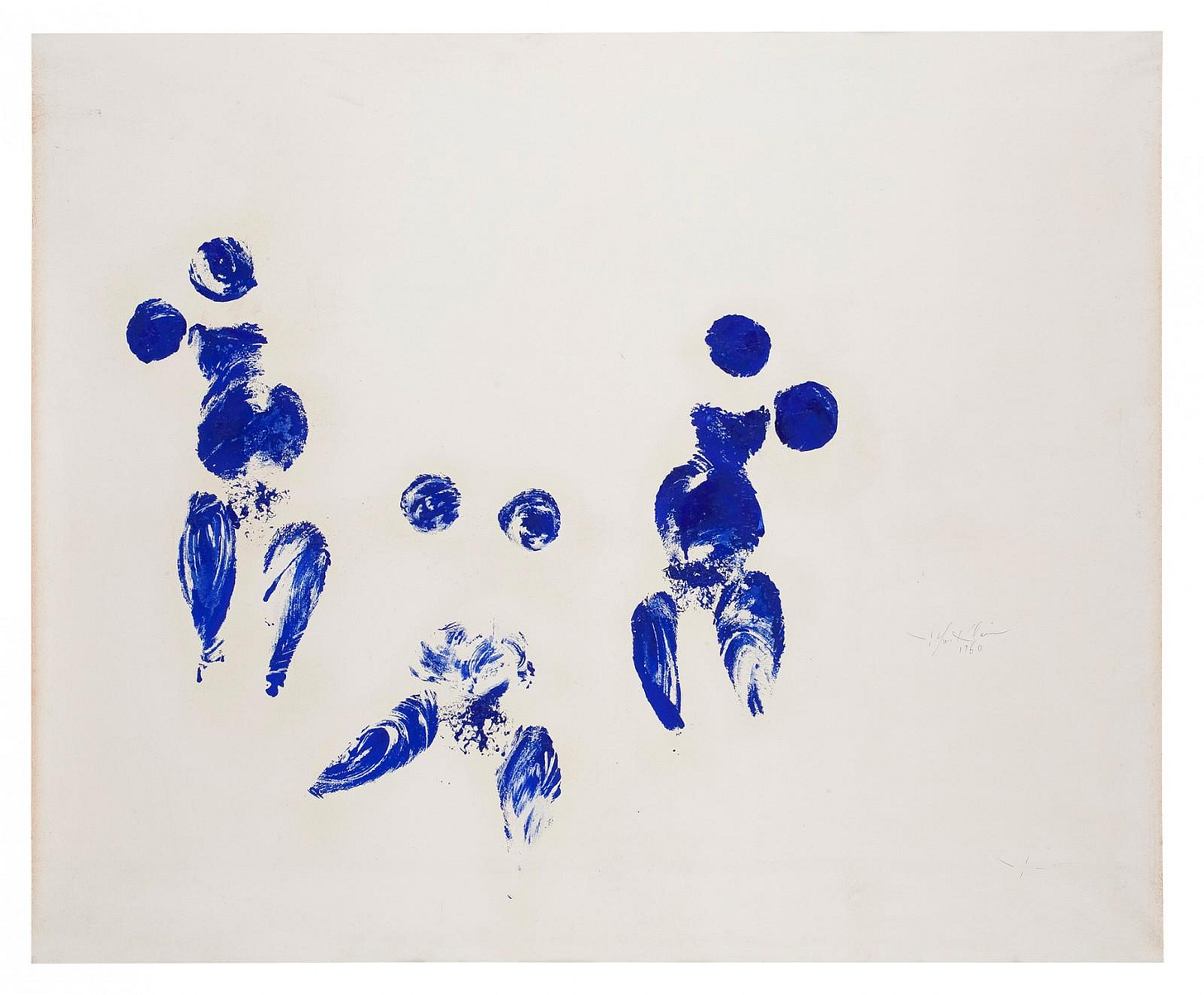
Irony of ironies, Klein’s patented blue pigment, IKB (International Klein Blue), is actually the thing that killed him at the young age of 34. In his short life, he explored the boundlessness of space and dreams and our relationship to nothingness and the void. Klein envisioned this tone as a way to “bathe in a cosmic sensibility.”
While best known for his vibrant canvases, often painted with implements other than a brush, one of his most notable works was an orchestral piece —
Monotone-Silence Symphony (first performed in 1960), a performance in which an orchestra plays a single note for 20 minutes, followed by a 20-minute period of silence, to a large audience.
– Tess Thackara, “Yves Klein’s Legacy Is About Much More Than Blue” for Artsy
He was fascinated by what was there and wasn’t there.
Then It Clicked
We’re removing the complexity and majesty of frequencies to make them applicable to a digital age.
I recently explored the flattening of art as everything is crammed into the nomenclature of ‘content.’ Upon hitting publish, I realized a glaring omission from the examination — the inclusion of the recent Apple iPad Pro commercial. What an oversight!
Blowback has been fast and furious (not to be confused with the Vin Diesel franchise). This commercial, titled Crush!, hits the symbolism of the digital age a little too squarely on the head while managing to be completely tone deaf to Apple’s existing customer base. How many artists and musicians and filmmakers are incredibly loyal Apple enthusiasts? Yet Apple chose to demolish the various art forms and replace them with the thinnest iPad yet.
Nothing will ever replace the tactile nature of sculpture or the visceral experience of live music. That said, there’s absolutely a place for what can be created with digital media or drawn on an iPad. But, but, but… how disingenuous to say that what can be achieved with a stylus is at all equivalent to the act of putting a brush to paper or a bow to strings.
If you’ve ever attended a live show, you know that the venue can completely change the impact of a performance. Experiencing a band play at The Hollywood Bowl evokes different emotion and energy than even the same set list coming from the stage of Madison Square Garden or, on the other end of the spectrum, a more intimate venue like Troubadour or The Hotel Cafe. The music takes on a different dimension based on the environment and the crowd.
What happens when we take the listening experience one step further? Placing a record for the performance onto a turntable and cranking the volume while dancing around your home is vastly different than plugging in your iPod Shuffle and going for a run with that as your soundtrack.
Exploring this notion in another way, West Side Story keeps coming to mind, specifically “Dance at the Gym.” To hear the slow mounting toward the ba ba bababa of the brass at the start of the song is still impactful and enjoyable without the deep hues of reds and purple contrasted against crisp blues as the ladies of the Sharks and the Jets dance onto the screen. The music takes on a different life as we see the two gangs square off against each other in the gym.
What’s more, I’m specifically referencing the 1961 film instead of the 2021 remake. Both of those further differ from seeing a high school production or the show live on Broadway. It’s all the same source material, but an incredible amount of factors influence how we experience those same strands of music. Mambo!
Why belabor this point with various musical references? I think it’s far easier to understand the impact of the formats with something more tangible than it is when discussing frequencies. We lose something when we can’t smell the sweat of the performers onstage as we sit in the third row. However, movies and soundtrack recordings make West Side Story more accessible to those who might never have the opportunity to see it live. There are tradeoffs.
Standing staring at an original Kandinsky is vastly different than hanging a poster of the painting in your dorm room or viewing a digital image on your screen. As long as we don’t claim that these variations are proximally the same, I’m totally fine with each iteration.
However, at what point does something no longer reflect what it claims to be?
Let’s say that you read twenty-five books in a year. In its truest form, a book references pages bound together. What if you read them on a Kindle or the latest iPad? Are they still books if they’ve lost their inherent attributes? What if you listened to them as audiobooks? You can no longer claim that you read twenty-five books. You listened to them. You absorbed the material, but the act of reading has been removed from the equation altogether. One must alter the assertion.
So Let’s Talk Devices
In my opinion, frequency devices fall somewhere between the West Side Story soundtrack and smashing the life out of all creativity in the iPad commercial. Yeah, that’s going to need a translation.
What we’re seeing with the majority of the frequency devices on the market is a flattening of complexity, similar to the iPad commercial, in order to translate for technology. Only one aspect of frequency is conveyed instead of a rich tapestry. Products such as Healy or Somavedic strip frequencies of all but their most simplistic components in order to appeal to the widest customer base.
Put in terms of our existing analogies, this would be like taking only the trumpets and playing it as a lone track. The rest of the orchestra and orchestration vanish.
Preprogrammed devices or those that apply the same systems to all of their users fall into a different category for me than the programs specifically designed for an individual. I’ve seen the power of tailored frequencies first hand. Protocols fashioned to my mom’s specific bioessence brought her back from completely non-verbal within a matter of days after her initial stroke. Her recovery was faster than the nurses had ever seen, until a second and third stroke led to her death.
There is a place for these contraptions, but that comes with a word of warning.
The Word of Warning
Do not become overly reliant on frequency devices. It’s easy to let them be a crutch so that you do not develop the energetic skillset to address your needs yourself.
I find that thinking of them a bit like a GPS helps. Plugging in your destination for a cross-country drive is a fantastic use of that technology. Using it to drive back and forth to the grocery store in a place where you’ve lived for five years is not.
Eclipsing your natural resilience and strength because you’ve become dependent on a device throttles your energetic expansion. It’s up to you, but I think you are capable of way more than that.
Of Course There Are Aliens
A discussion on frequency devices wouldn’t be complete without a mention of aliens.
When people first started asking my thoughts on the Healy, I was hesitant about the device but didn’t have any major red flags. Fast forward. Now when I sense into the device, I feel alien interference on the line. Various groups of aliens have found a way to hijack the preset frequency programs. They’re piggybacking on the coding and the design. This is happening with greater regularity when it comes to many aspects of technology these days and is even popping up in some sound healing sessions.
Tread carefully and keep your eyes peeled. Reassess frequently.
What’s Next?
We can take this conversation in a lot of different directions — homeopathic remedies, flower essences, 5G, frequency warfare, psychic manipulation, EMF protection, singing bowls, wearable tech, and so on.
I’m happy to go down any of these paths. What’s of interest to you?
You lead. Ask your questions, and we’ll go from there!
Who’s as excited for the Q&A portion as I am?
P.S. Apparently this conversation has some seasonality to it. There’s a much older Instagram highlight titled “frequency” that delved into different aspects of this 54 weeks ago. I wonder what it is about this time of year.
P.P.S. My curiosity is high regarding the influence that Kandinsky and Der Blaue Reiter might have had on Yves Klein. Theoretically they would have been moving in similar circles in France and Germany only a few years apart so in the grand scheme of things, the idea of their conceptual views on spirituality and art abutting is not far fetched.
Some things require actual art historical texts and reference materials along with real life research. I have none of that at my disposal currently. Instead I leave you with some works showcasing the color blue from the early to mid-twentieth century. Enjoy.
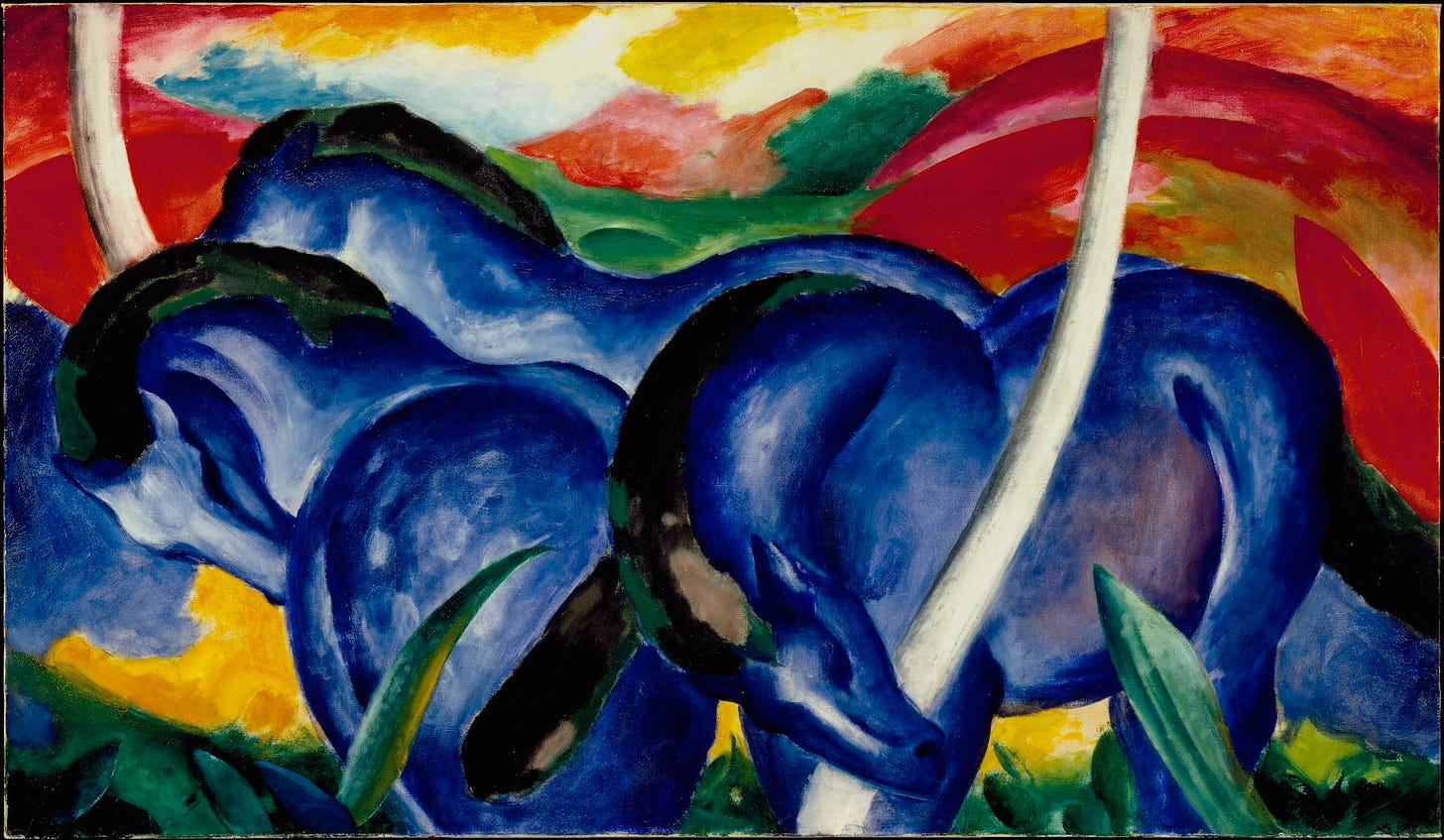
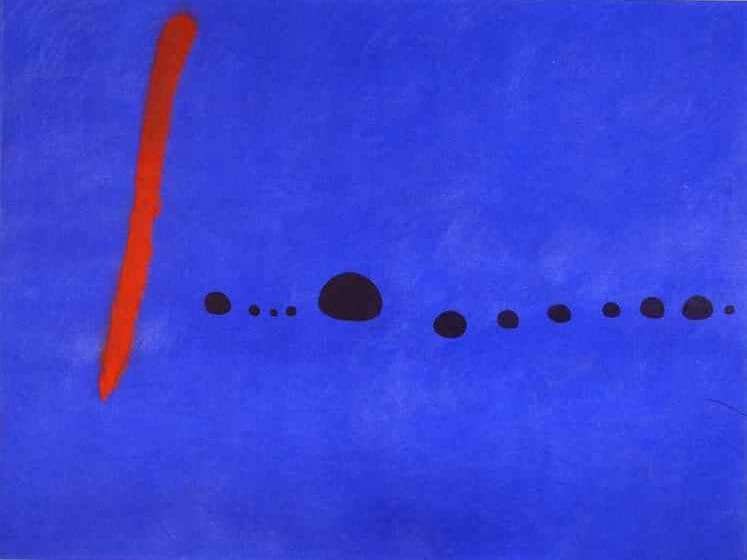
P.P.P.S. Samsung created an excellent ad in response to the stupidity of Apple’s Crush! Commercial. Well played.








